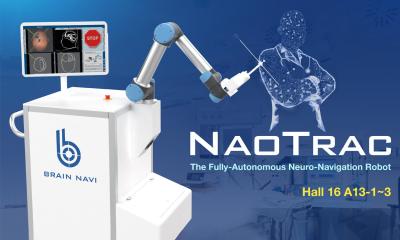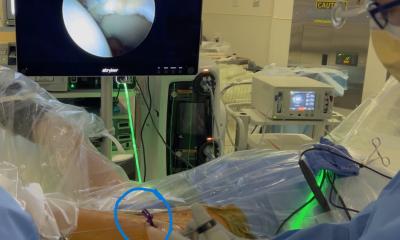Europe
Medics call for urgent improvements in the quality of endoscopy
Every year, tens of millions of individuals across Europe undergo endoscopic procedures to assist with the diagnosis and management of gastrointestinal diseases. However, significant variation in current endoscopy provision across Europe has been reported, with back-to-back colonoscopy studies demonstrating that a concerning 22 percent of all adenomas are missed and that a three-to-six fold variation in adenoma detection is present between endoscopists.

This inconsistent provision, coupled with improved first-line screening methods, has created a requirement to improve the quality of endoscopy services as endoscopy of a high quality have been shown to deliver superior health outcomes, better patient experience and fewer repeat procedures3.
United European Gastroenterology (UEG) and The European Society of Gastrointestinal Endoscopy (ESGE) have therefore published a joint paper which identifies a need for change and outlines the first phase of a series of recommendations for improvements in quality standards of endoscopy.
UEG endoscopy specialist Professor Thierry Ponchon, who is a member of the ESGE Quality Improvement Committee, welcomes the publication of new standards. "Endoscopy services throughout Europe are at a critical point at the current time. We must make improvements in the quality of service for our patients a major and immediate priority. Our aim is achieve high quality standards for endoscopy throughout Europe over the next two years and create a thriving community of endoscopy services for all."
Central to any endoscopy practice is the endoscopy report, which facilitates the exchange of essential information such as the endoscopy findings and clinical recommendations. As with many forms of medical records, endoscopy reports are traditionally unstructured and utilise free text, which acts as a barrier for quality assurance and increases the difficulty in comparing and translating records. In facilitating UEG and ESGE's vision and to ensure the continuous measurement of endoscopy quality for patients, ten requirements for endoscopic reporting systems have been outlined and published in the April issue of the UEG Journal4:
- Endoscopy reporting systems must be electronic.
- Endoscopy reporting systems should be integrated into hospital patient record systems.
- Endoscopy reporting systems should include patient identifiers to facilitate data linkage to other data sources.
- Endoscopy reporting systems shall restrict the use of free text entry to a minimum, and be based mainly on structured data entry.
- Separate entry of data for quality or research purposes is discouraged. Automatic data transfer for quality and research purposes must be facilitated.
- Double entry of data by the endoscopist or associate personnel is discouraged. Available data from outside sources (administrative or medical) must be made available automatically.
- Endoscopy reporting systems shall enable the inclusion of information on:
- a. Histopathology of detected lesions
- b. Patient's satisfaction
- c. Adverse events
- d. Surveillance recommendations.
- Endoscopy reporting systems must facilitate easy data retrieval at any time in a universally compatible format.
- Endoscopy reporting systems must include data fields for key performance indicators as defined by quality improvement committees.
- Endoscopy reporting systems must facilitate changes in indicators and data entry fields as required by professional organisations.
Professor Matthew Rutter, Chair of the ESGE Quality Improvement Committee, comments, "The implementation of appropriate information technology infrastructure, based around electronic endoscopy reporting systems, is an important step in quality improvement. Units should ensure that they have, and use, such a system - both to capture endoscopic data and create structured endoscopy reports, and to permit standardized performance measure reporting."
Source: SAGE
31.03.2016











